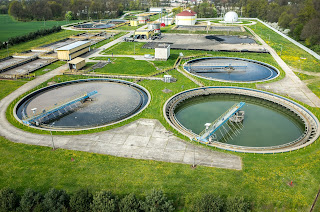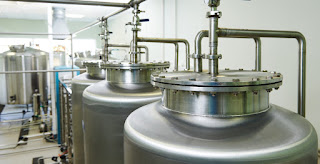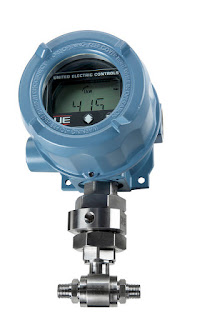Small, specialized industrial distribution and technical service companies hold a unique and vital place in the American economy. Their contributions are often quiet but indispensable, ensuring that industries from energy and pharmaceuticals to water treatment and advanced manufacturing operate with efficiency, reliability, and innovation. Miller Energy, Inc., headquartered in South Plainfield, New Jersey, serves as a strong example of how these firms combine technical expertise with regional presence to keep industry running smoothly. By specializing in industrial process control instrumentation, valves, and process analytics, and by supporting customers through sales offices across the Mid-Atlantic and Northeast, Miller Energy demonstrates the outsized impact such companies have despite their modest size.
What distinguishes companies like Miller Energy is their ability to serve as more than just suppliers. They are trusted intermediaries who connect global manufacturers of advanced technologies with the local engineers and operators who must integrate those technologies into day-to-day operations. A large-scale, centralized distributor may offer broad inventory, but it is the regional distributor, with boots on the ground and offices embedded in the communities they serve, that can provide the immediate, nuanced support industrial customers require. Miller Energy’s strategically placed sales offices are a prime example of how regional presence translates into real-world value. They enable the company to maintain close contact with clients, respond promptly to urgent needs, and establish lasting relationships that foster trust and continuity.
This regional footprint also brings deep contextual knowledge. By working closely with local plants, utilities, and processing facilities, these companies develop a deep understanding of the unique operational challenges faced in their respective markets. In the Mid-Atlantic and Northeast, where industries are heavily regulated and processes must be precise, this knowledge is critical. Miller Energy’s sales and technical teams not only supply instruments and valves but also guide proper integration, ensure systems are calibrated correctly, and troubleshoot problems on site. These services help customers maintain compliance, improve efficiency, and avoid costly downtime. The real value lies in this combination of technical knowledge with the accessibility that comes from having local offices staffed by people who understand the region’s industries and can respond quickly.
The technical service capabilities of firms like Miller Energy extend their impact far beyond simple distribution. Their employees are often engineers and technicians who understand the intricacies of process control systems. They know that a valve or a sensor is only as useful as its compatibility with the larger system it supports. This expertise enables them to help customers implement complex solutions effectively, bridging the gap between what manufacturers design and what operators in the field actually need. By offering consulting, training, and ongoing support, they help ensure that advanced technologies are not just purchased but fully integrated, delivering lasting value to the end user.
Economically, these businesses create significant multiplier effects in their communities. They provide well-paying jobs for sales engineers, service specialists, and office staff. They support local vendors for everything from transportation to marketing to facility upkeep, circulating money back into the regional economy. Their presence reinforces local industrial ecosystems, enabling manufacturers—particularly small and midsize ones—to access cutting-edge technologies that might otherwise be out of reach. By lowering barriers to adoption, they keep regional industries competitive, ensuring that jobs and production remain anchored in American communities rather than migrating abroad.
Just as importantly, these companies serve as conduits for innovation. Manufacturers rely on regional distributors to demonstrate new technologies, provide training, and offer technical support that encourages adoption. A water treatment plant or pharmaceutical facility may hesitate to invest in a sophisticated process analyzer without the reassurance of a local partner who can install it, train staff to use it, and ensure it performs as expected. Through its sales offices, Miller Energy helps introduce such innovations to customers across its service territory, spreading the benefits of advanced process control technologies far beyond the largest corporations. This democratization of access helps smaller firms compete on a global scale, while also driving improvements in efficiency and sustainability that benefit entire industries.
The contributions of small distributors and technical service providers are too often overlooked in discussions of American industrial competitiveness, which frequently focus on large manufacturers or international supply chains. Yet the everyday reliability of U.S. industry depends on these regional firms. They ensure equipment is running, utilities are operating, and processes are compliant with regulatory standards. Their local offices provide a level of responsiveness and relationship-building that no centralized distributor can replicate. By embedding themselves in the regions they serve and developing deep partnerships with their customers, they form a backbone of service and support that sustains industrial productivity.
Miller Energy, with its headquarters in South Plainfield and its network of regional sales offices, exemplifies the essential role these firms play. Its presence ensures that advanced process control technologies reach the facilities that need them most, and that those technologies deliver their full value in practice. By combining global technology with local service, it helps keep American factories, utilities, and processing plants efficient, safe, and competitive. These small but specialized businesses may not always be visible to the broader public, but they are among the most critical players in strengthening America’s industrial foundation. Their role in enabling innovation, supporting communities, and safeguarding the daily operations of critical industries ensures they will remain indispensable to the nation’s economic resilience.




















